Mahkum: Profesör Fatih Şen’in en son çıkan makalesi var mı? Gardiyan: Hayır ama eleştirmenleri burada!
Fatih Sen is probably the most productive nanotechnology researcher in Turkey, doing his magic at the Dumlupinar University in Kütahya. Apparently, Dr Sen is also extremely well connected politically, because his critics are now literally scared for their lives. A debate about the almost 90 of Sen’s PubPeer-listed papers on the Turkish discussion forum Eksisozluk was swiftly blocked upon a Criminal Court order which Sen achieved with such velocity it was scary in itself.
People received phone calls and messages warning them not to discuss Sen’s work. Nobody dares to say a word now, sources indicate that even the critics among his faculty colleagues are trembling in fear, “terrified of Sen’s political ties”. Indeed, the protection comes from the very top:
“Dr. Şen is not terrified of any investigation and tells his students that there will be no investigation whatsoever.“
Sen relies on his Rector Kazım Uysal (like all Turkish rectors, a personal loyal appointee of the authoritarian President Recep Erdogan himself) to protect him, especially since Sen also brings EU Commission money to the university. However, the international journals did start asking inconvenient questions (as I was informed), with Sen trying to convince them that corrections (or rather nothing) are the appropriate actions for his almost 90 publications flagged on PubPeer. Sources report that presently
“his team was working day and night to produce materials on his publications.“
And this is how the story started. A certain contributor of my site who wishes to be known as Dayo Maor and who comments on PubPeer as Thallarcha Lechrioleuca, was doing their usual #FakeSpectraGoogling, and stumbled upon some papers from Sen’s lab which XRD (X-Ray Diffraction) spectra made no sense. Incidentally, it was a bit similar to strangely repetitive spectral noise data from another Turkish nanotechnologist, Omer Nur (who works at Linköping University in Sweden, read here). The more Thallarcha Lechrioleuca looked into Sen’s papers, the more they found, so they asked me to call the famous image integrity sleuth Elisabeth Bik for help.
You can imagine what happened then. Bik posted her findings on PubPeer, wrote a highly impactful blog post and shared her full analysis in a public Google Sheets document. This in turn caused a big debate in Turkey which Sen quickly stifled with court orders and other threats. Now what?
The count is presently at 87 papers, 3 more since the blog post. Bik wrote:
“Of note, one third (28/84) of these papers have been published in Scientific Reports, and 19 of these were published in 2020 alone. Other journals that published relative large portions of this set are the International Journal of Hydrogen Energy (16 papers), the Journal of Molecular Liquids (7 papers), and Nano-Structures & Nano-Objects (5 papers).“
Now, in my view, if Scientific Reports were to retract all those 28 papers which Sen’s published in a mere year and a half, the commercial open access journal would kind of admit being nothing but an open sewer or a trash bin of the Nature Publishing Group where anything goes and the paying customer is king. Yes, I know it is an open secret, but still. The same likely goes for the journal RSC Advances, the pay-to-publish cash cow of the Royal Society of Chemistry, where Bik flagged 6 papers from the Sen Research Group for suspected fraud. Hence, my prediction that Sen will get away with (mostly? only? not even?) corrections, because it is not just his own personal reputation which is at stake.
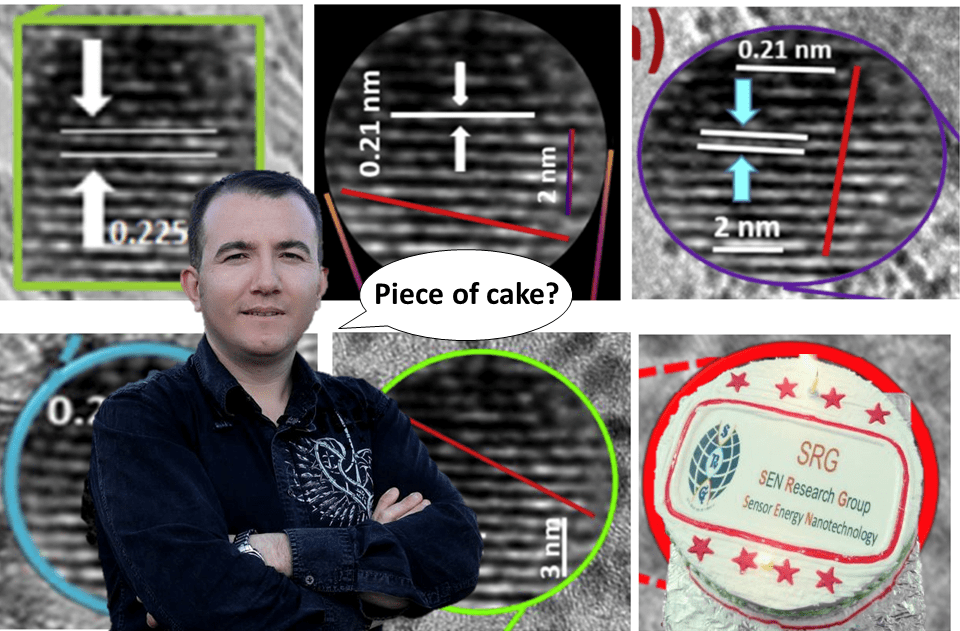
In a way, Sen is right to blame his lab members for the data fakery, because it seems the entire lab is in that business nowadays. One only wonders what these people do to students who refuse to participate in their Photoshop orgies, or even try to complain about such depraved practices. Do they just get expelled from the lab and even science in general, with annihilating letters of un-recommendation? Or even worse? This is Turkey, after all, and remember, Sen is incredibly well-connected and a tough guy who takes no nonsense from anyone.
But like with every ruggedly virile and muscle-flexing dominant male, there is a soft side to Fatih Sen. There are sweets and cakes in the lab, with the leader’s name or even his face on them. The lab members look happy, as if nothing at all is wrong, proud to work for their “Science Hero“. Also Mrs Sen is a lab member, it is all like a happy family in a business of counterfeit nanotechnology research. Creepy and terrifying, if you ask me.
Sen’s “research” career started as PhD student at Middle Eastern Technical University (METU) in Ankara, in the lab of Gülsün Gökagac. Did she ever notice that:
Fatih Şen, Gülsün Gökaǧaç Different Sized Platinum Nanoparticles Supported on Carbon: An XPS Study on These Methanol Oxidation Catalysts The Journal of Physical Chemistry C (2007) doi: 10.1021/jp068381b

XPS spectra (c) and (d) are identical“
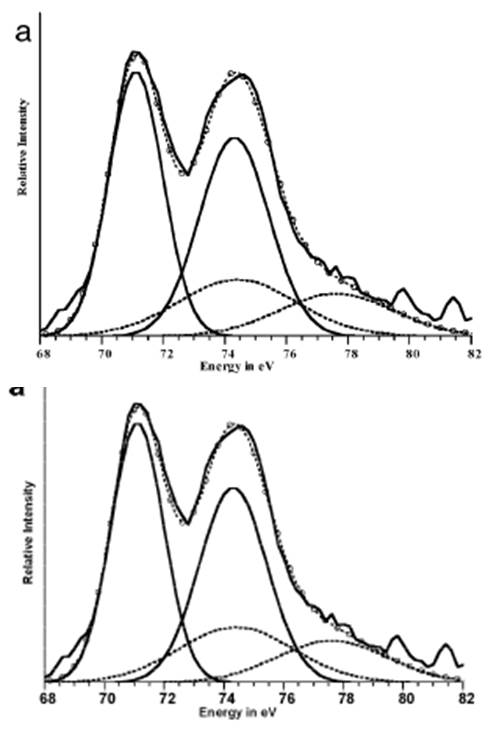
Most likely, some experimental data was lacking, or didn’t look as desired. So spectra from one figure was copy-pasted into another figure, re-labelled to stand in for utterly different experiments. It worked great, nobody noticed. The next step was bolder.
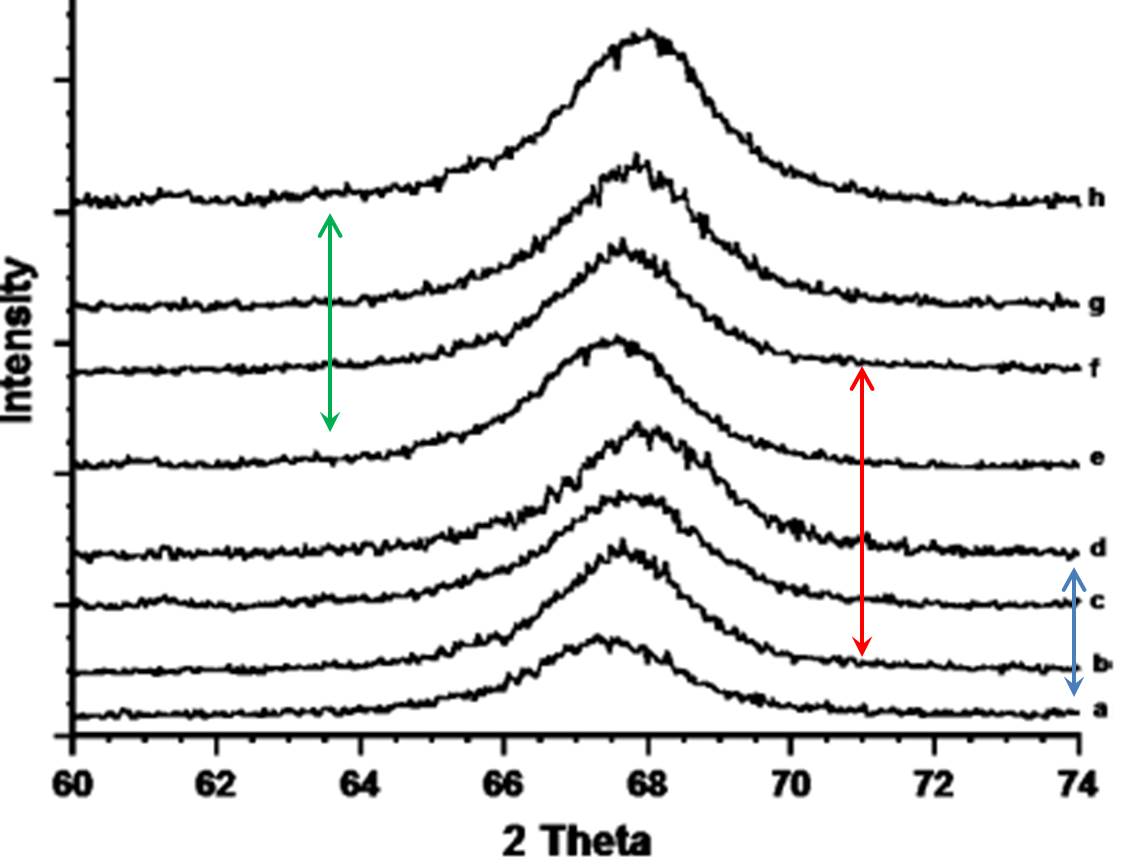
Zafer Ozturk, Fatih Sen, Selda Sen, Gulsun Gokagac The preparation and characterization of nano-sized Pt–Pd/C catalysts and comparison of their superior catalytic activities for methanol and ethanol oxidation Journal of Materials Science (2012) doi: 10.1007/s10853-012-6709-3
That paper’s co-author Selda Sen is, as it turned out, Fatih Sen’s ex-wife. At around that time they worked at MIT in USA together, as external PhD students for one year. The colour arrows in the figure indicate “3 pairs of XRD patterns in one figure. Not completely identical with horizontal shift of whole pattern relative to another.”
That was never an honest mistake for sure, and still nobody noticed or minded. Instead, Sen’s thesis, defended in 2013, received the METU Thesis of the Year Award.
Soon after, Sen got appointed as project leader at the Dumlupinar University where he proved so productive that he was swiftly made professor. Sen eventually stopped giving a toss about anything, maybe because nobody really read his papers, only their number and impact factor counted. Or maybe, those who did read them (at least in Turkey) were swiftly dealt with?
The next step from the mere copy-pasting of entire XRD tracks was obviously to fabricate new, utterly fictional XRD spectra, by removing or creating peaks where desired. Sen’s research got the quickly:
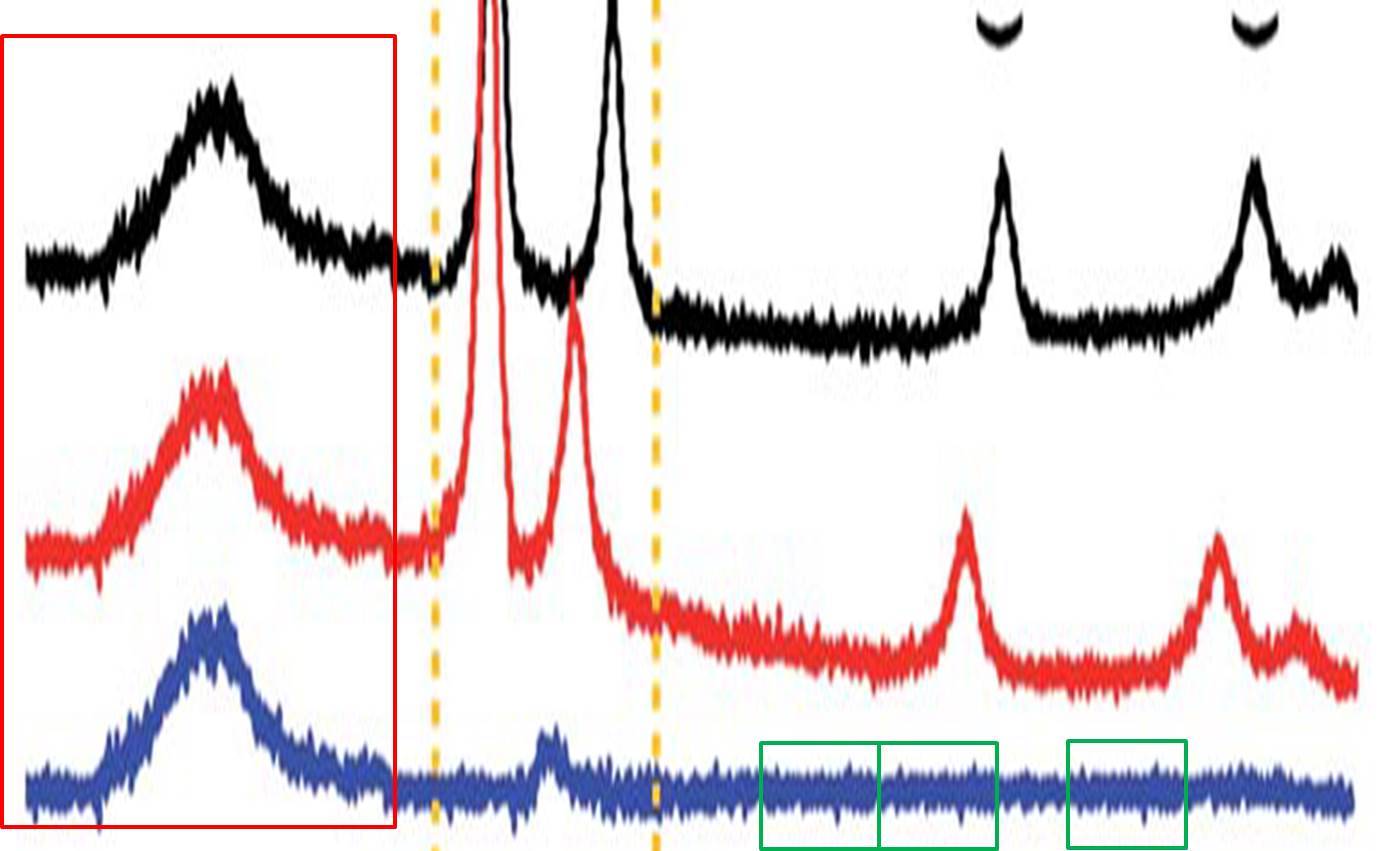
Betül Çelik, Yunus Yıldız, Hakan Sert, Esma Erken, Yagmur Koşkun, Fatih Şen Monodispersed palladium–cobalt alloy nanoparticles assembled on poly(N-vinyl-pyrrolidone) (PVP) as a highly effective catalyst for dimethylamine borane (DMAB) dehydrocoupling RSC Advances (2016) doi: 10.1039/c6ra00536e
“Fig. 2 XRD of Pd@PVP, Co@PVP and Pd–Co@PVP NPs. Low angle part of XRD patterns is identical, the rest is not. Blue pattern has repetition of noise fragments.“
The significant co-author on this and many other forgeries is Sen’s Master Student, now PhD student and his wife, Betül Sen, nee Celik. Also on this atrocity:
Haydar Göksu, Betül Çelik, Yunus Yıldız, Fatih Şen, Benan Kılbaş Superior Monodisperse CNT-Supported CoPd (CoPd@CNT) Nanoparticles for Selective Reduction of Nitro Compounds to Primary Amines with NaBH4 in Aqueous Medium ChemistrySelect (2016) doi: 10.1002/slct.201600509

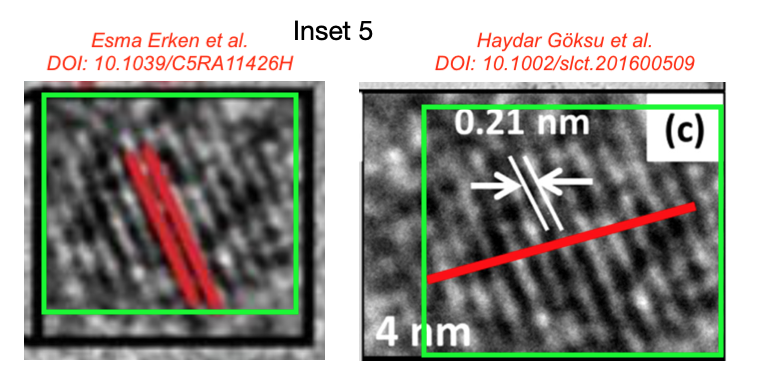
You see there is a copy-pasted Inset 5 found by Bik in two papers from Sen’s lab, which might prompt you to deduce there must exist Inset 1-4 and possibly 6 or even 7, cloned across various publications? You are absolutely right, dear reader, pity you cannot put your cleverness to such good use scientifically as Professor Sen does. But yes, these cloned insets are accompanied by fabricated spectra, how else did you expect this to work scientifically? Below comes Inset 1 which was reused in… no, not in two papers. Not 3, not 4, not 5, no, not even 10. Reader, you are disappointing me. We are talking about Professor Fatih Sen after all. 20? 25? Get out, your failed scientist.

FOURTY-TWO PAPERS!!!
Here is one of them.
Yasar Karatas, Esra Kuyuldar, Hilal Acidereli, Mehmet Gulcan, Fatih Sen Polypyrrole-multi walled carbon nanotube hybrid material supported Pt NPs for hydrogen evolution from the hydrolysis of MeAB at mild conditions Scientific Reports (2019) doi: 10.1038/s41598-019-55030-z
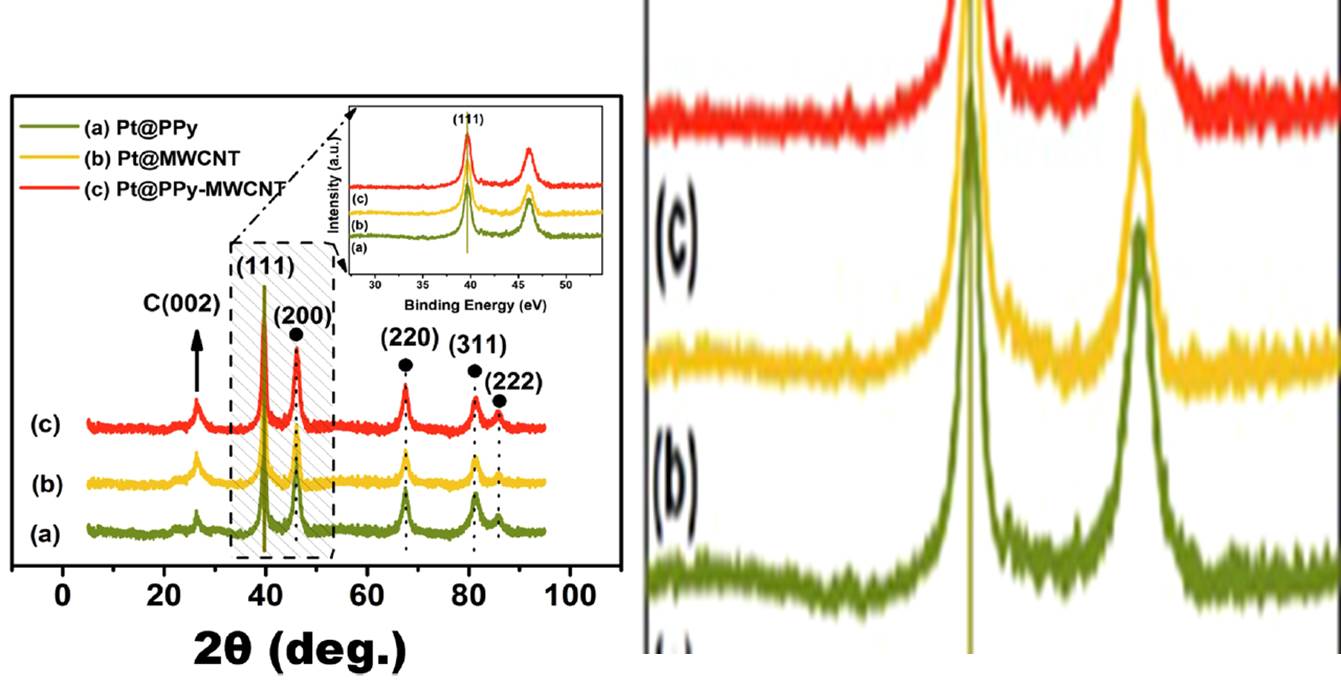
These are 3 copies of one XRD pattern“

Of concern, the same photo is used to represent a different type of nanoparticle in each of these papers.“
What Sen’s approach to science exactly did to XRD spectra, is nicely visualised in this paper from the >40 strong Inset 1 collection.
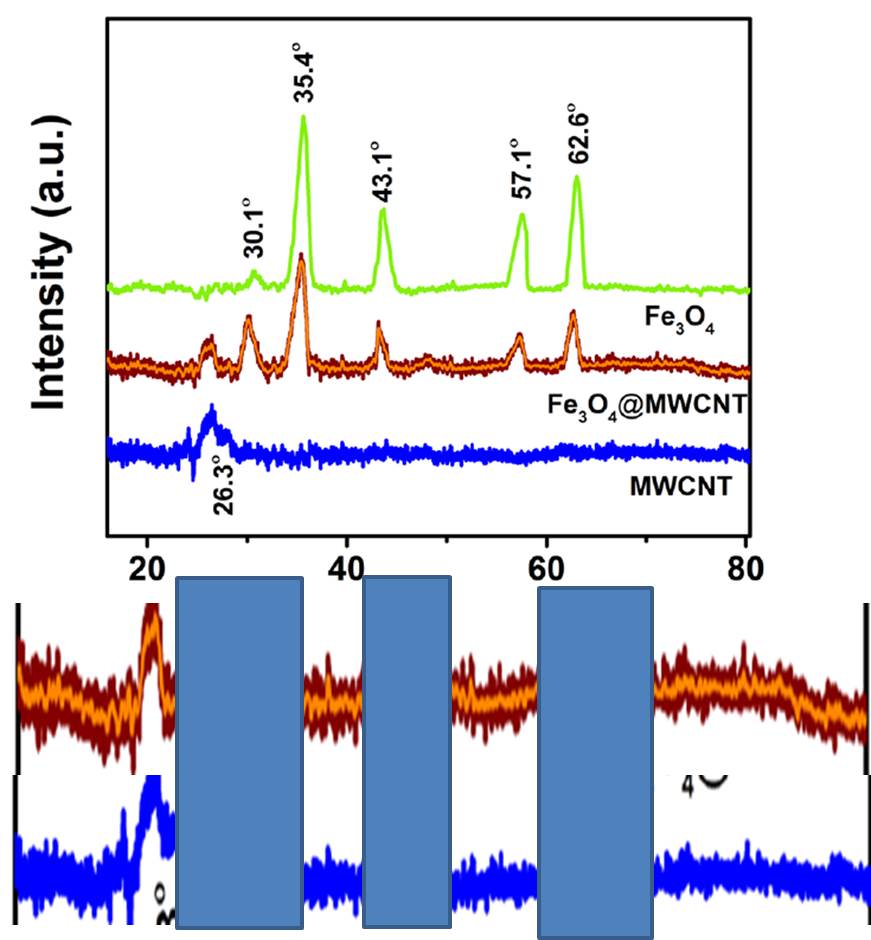
Mehmet Salih Nas, Esra Kuyuldar, Buse Demirkan, Mehmet Harbi Calimli, Ozkan Demirbaş, Fatih Sen Magnetic nanocomposites decorated on multiwalled carbon nanotube for removal of Maxilon Blue 5G using the sono-Fenton method Scientific Reports (2019) doi: 10.1038/s41598-019-47393-0
“Figure 1 shows unexpected similarity of noise in XRD patterns of Fe3O4@MWCNT and MWCNT.“
The only difference between blue and red spectra are the peaks, if you hide them you see impressive similarities. In the green XRD spectrum, there are also cloned sections on the left-hand side.
There is a hilarious comment from Sen about one of the over forty Inset 1 papers. The first author is Sen’s wife Betül (Sen et al J Mol Liquids 2018). Her alpha-male husband plays the tough guy and announces that he will force the journal to accept a correction:
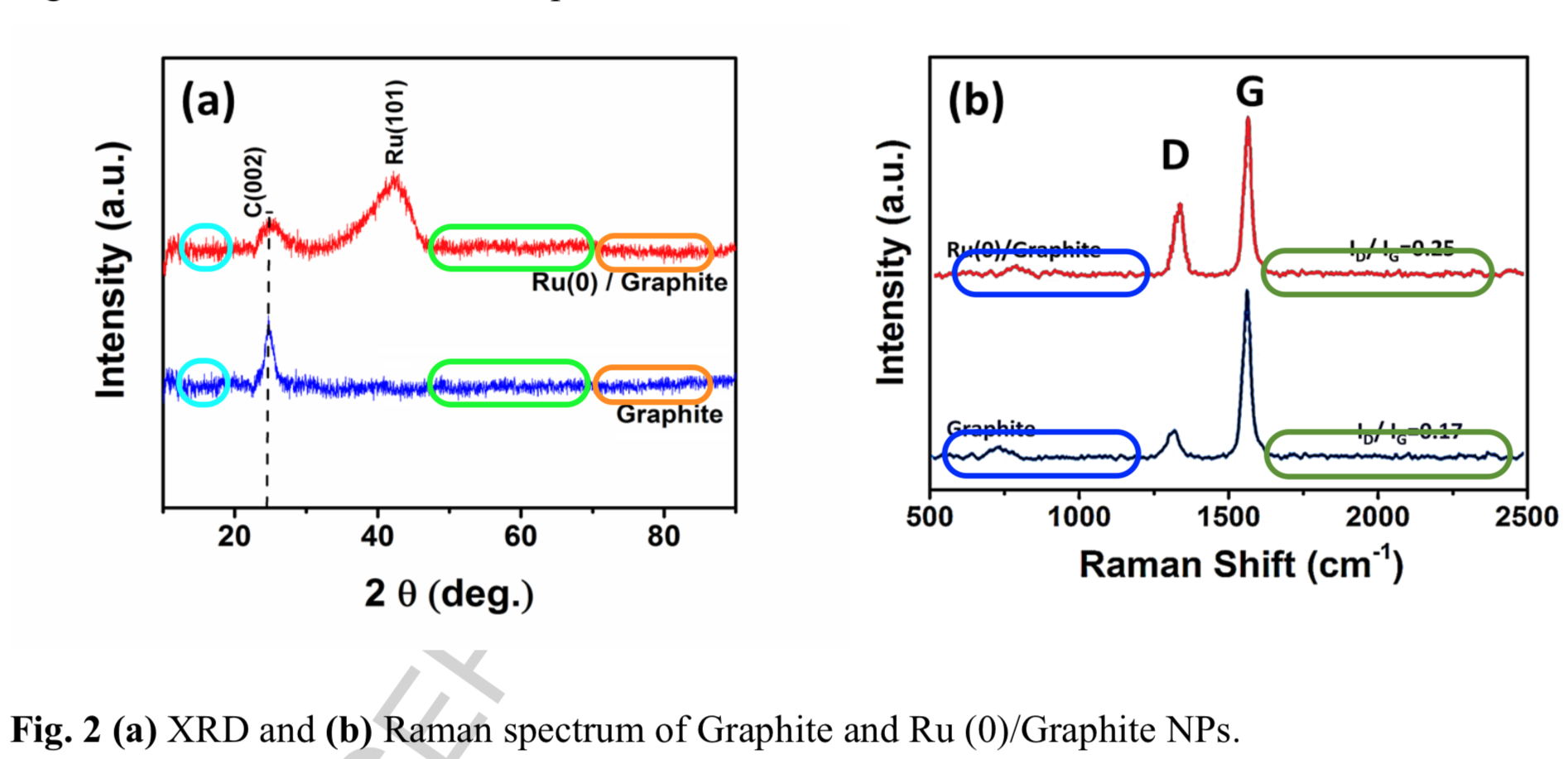
“I have talked to my post docs related to this and they Will send me the original files. If they do not come with original files, then I will write the journal about the correction of article. Thanks again for your interest. I am so sorry for the case. I can guarentee that if there is a problem, it will be corrected…“
Problem is, Sen is probably right. Elsevier will not retract this, probbaly not even correct, simply because Dumlupinar University will decree that there is nothing wrong in Sen’s papers. Nothing. All a huge anti-Turkish conspiracy.
Inset 2 has so far been copied across 15 papers, which is still extremely impressive. Here an example:
Betül Şen, Ayşenur Aygün, Aysun Şavk, Sibel Duman, Mehmet Harbi Calimli, Ela Bulut, Fatih Şen Polymer-graphene hybrid stabilized ruthenium nanocatalysts for the dimethylamine-borane dehydrogenation at ambient conditions Journal of Molecular Liquids (2019) doi: 10.1016/j.molliq.2019.02.003
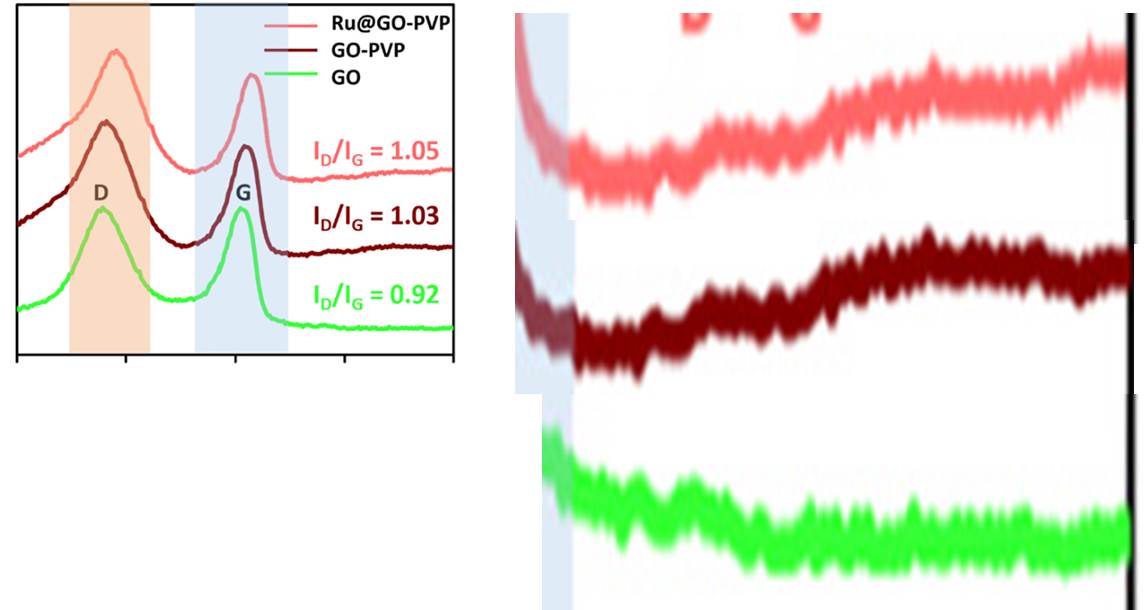
Three copies of one mother spectrum with slightly differently subtracted background. Zoom on one fragment.”

Of concern, the same photo, which I have called “Inset 2”, is used to represent a different type of nanoparticle in each of these papers.”
Naturally, there was also Inset Type 3, here it is:
Özlem Karatepe, Yunus Yıldız, Handan Pamuk, Sinan Eris, Zeynep Dasdelen, Fatih Sen Enhanced electrocatalytic activity and durability of highly monodisperse Pt@PPy–PANI nanocomposites as a novel catalyst for the electro-oxidation of methanol RSC Advances (2016) doi: 10.1039/c6ra06210e
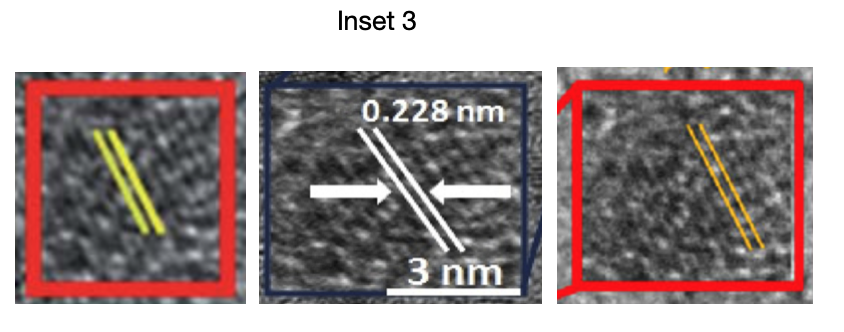

If you think this was the zenith or rather a nadir of Sen’s research ethics: no. The year 2020 brought new lows, of Frankenstein spectra and microscopy images assembled from bits and pieces torn off some unrelated data. Behold, Inset 4.
Betul Sen, Hilal Acidereli, Neslihan Karaman, Fatih Sen Monodisperse palladium–cobalt alloy nanocatalyst supported on activated carbon (AC) as highly effective catalyst for the DMAB dehydrocoupling Scientific Reports (2020) doi: 10.1038/s41598-020-68773-x
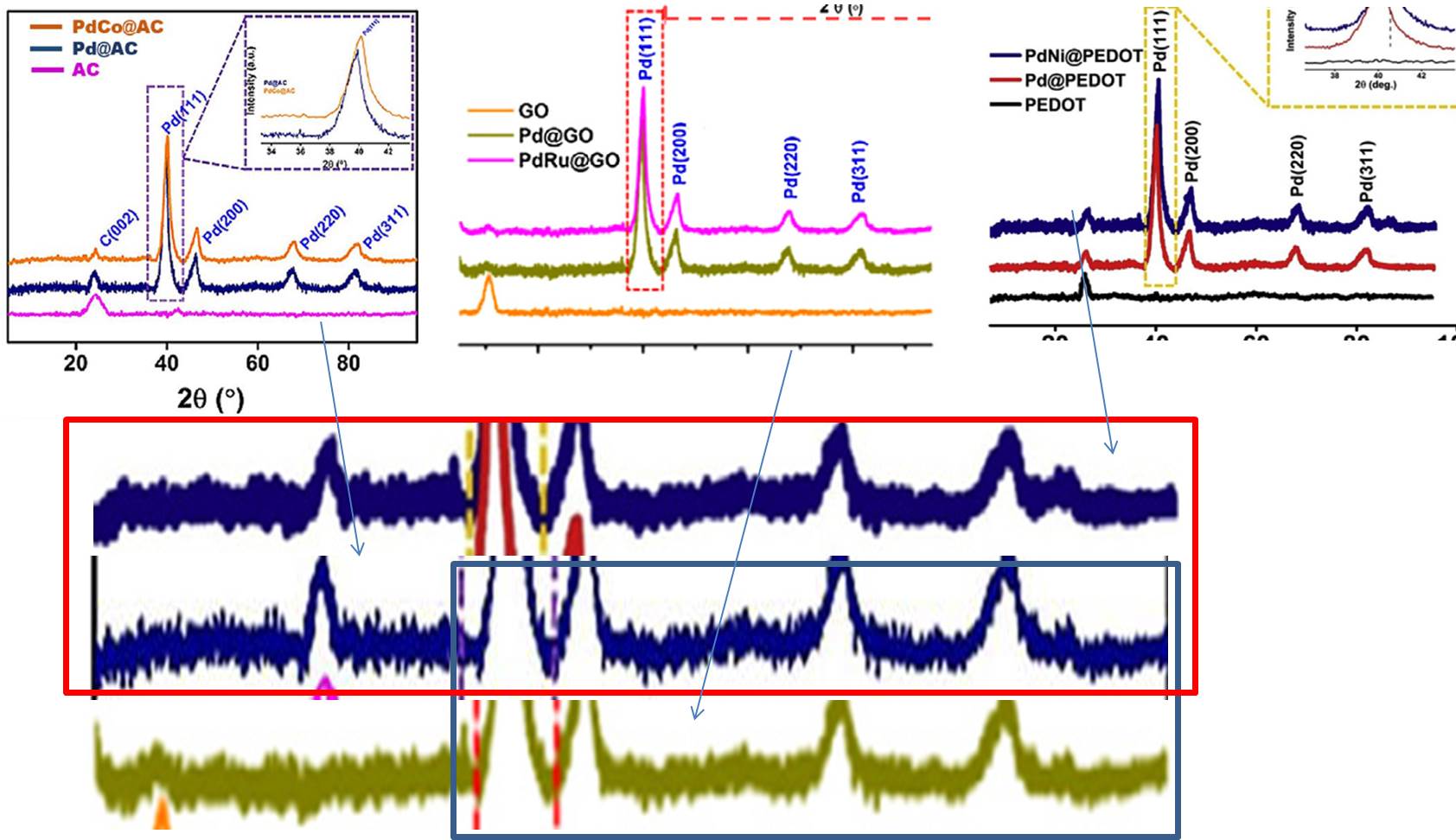



Bik: “This paper appears to be one of a set of at least 2 papers by the same research group that both appear to share the same photo. [..] Of concern, the same photo, which I have called “Inset 4”, is used to represent a different type of nanoparticle in each of these papers.”
We had Inset 5 before, remember? So now, Inset 6, also found in 2 papers.
Yasar Karatas, Hilal Acidereli, Mehmet Gulcan, Fatih Sen A novel highly active and reusable carbon based platinum-ruthenium nanocatalyst for dimethylamine-borane dehydrogenation in water at room conditions Scientific Reports (2020) doi: 10.1038/s41598-020-64046-9

Two XRD patterns are different only in the region of one peak.”


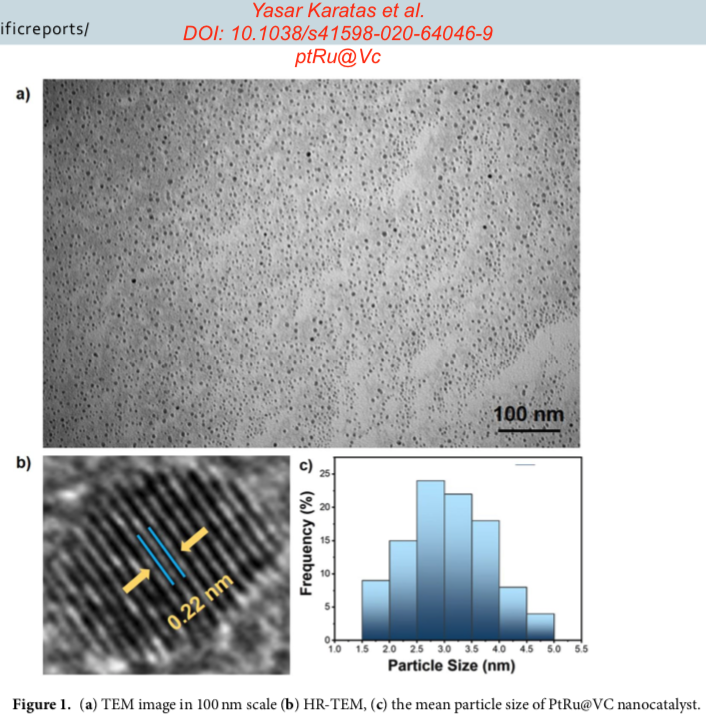
Now, for reasons of Bik’s reverse sleuthing, Inset 7 is actually a bit dusty, from papers from 4 years ago. A challenge for you, dear reader, would be to check for fake XRD spectra there. Because the esteemed Royal Society of Chemistry (RSC) won’t be doing that for sure while issuing a predictable correction.
Yunus Yıldız, Handan Pamuk, Özlem Karatepe, Zeynep Dasdelen, Fatih Sen Carbon black hybrid material furnished monodisperse platinum nanoparticles as highly efficient and reusable electrocatalysts for formic acid electro-oxidation RSC Advances (2016) doi: 10.1039/c6ra00232c
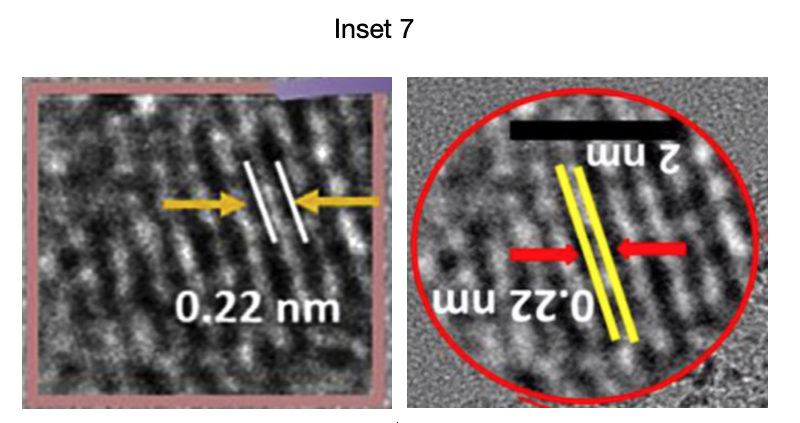
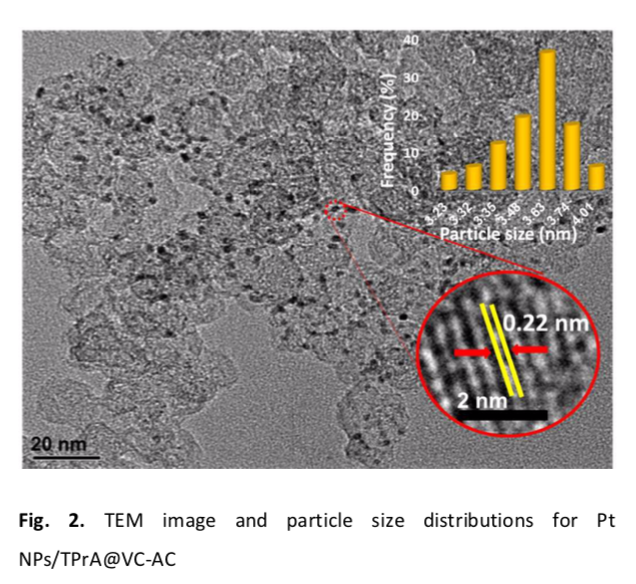

And then, there is this new monstrosity. It proved to be worse than originally flagged by Bik.
Ahmet Karadağ, Hüseyin Akbaş, Ali Destegül, Çiğdem Çakırlar, Yusuf Yerli, Zeynel Kılıç, Fatih Sen Synthesis and characterization of trimeric phosphazene based ionic liquids with tetrafluoroborate anions and their thermal investigations Scientific Reports (2020) doi: 10.1038/s41598-020-68709-5
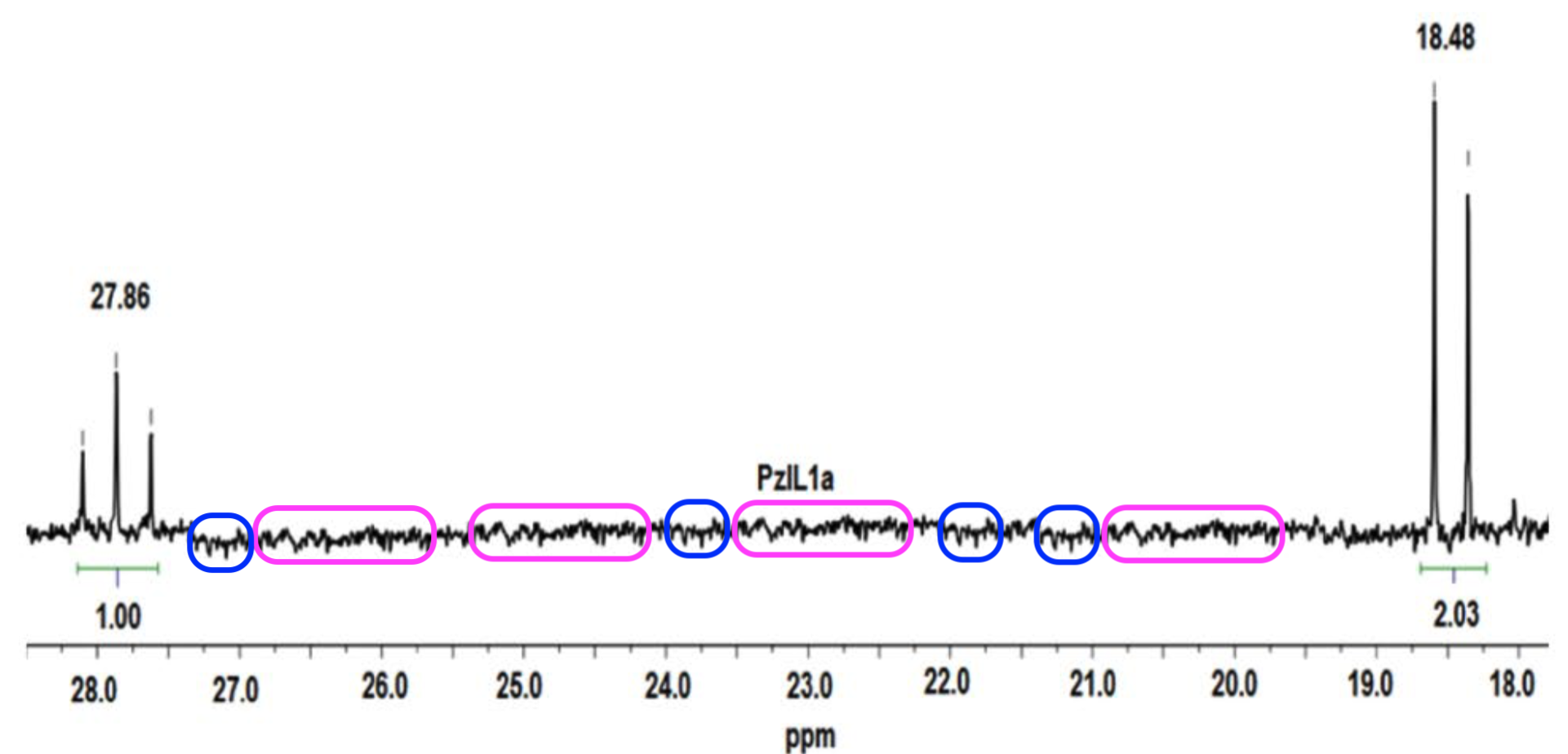


This is where it got really nasty. It started with the second author, Hüseyin Akbaş, replying on PubPeer:
“Here noise peaks do not affect the characterization of the compounds. The original spectra of the compounds are present and we can prove all the peaks compounds. There is nothing contrary to scientific ethics in this article. The issues and information discussed in the publication are original.“
Bik invited Akbas to share the original data. Which Akbas even did! He uploaded some raw data to Google Drive (here and here) and commented:
“…Photoshop was definitely not made. […] Scientists who are familiar with phosphorus nitrogen chemistry can easily analyze it. These scientists can find chemical shift values and coupling constants by calculating. These calculations will verify the coupling constants in Table 1….”
Guess what happened then. Bik invited an expert (@popher) to have a look. It turned out, the files Akbas “shared in #8 are for PzIL4a and PzIL5a. But I had concerns about PzIL1a, PzIL6a, and PzIL8a.” But wait, it got even better (or worse, depending on your capacity for cynicism). Bik soon commented:

“The spectrum that @Popher created from the FID file you provided for sample PzIL5a appears to show much more background than the spectrum shown for that sample in Figure S1. Here is a comparison of the two. Note the extra peaks around 21.5-22 and around 18.5. […] Twitter user @RogerGalligan pointed out some areas in the PzIL5a plot provided in Figure S1 that appear to look repetitive. I have marked them here below. Of note, the repetitive areas, marked here in dark red, green, and blue, occur only once in the redrawn-from-FID file, while they occur twice each in the published figure. These repeats happen to be the areas with the background peaks that are missing in the published plot.“
What kind of people are Sen and his lab members, to do something like this? For sure, a very dangerous kind. Don’t mess with them.
Update 14.09.2020
Today’s statement by the Turkish Science Academy on Fatih Sen, in full (translation provided by a reader):
Associate Professor Fatih Şen has been removed from the 2015 BAGEP Award List.
A serious allegation about violations of science ethics in the articles published by the research group working under the supervision of Fatih Şen, who received the 2015 BAGEP award, was published on August 3, 2020 on a website [1] and these claims were reported to the Presidency of the Science Academy by some BAGEP award-winning scientists and by the members of the Academy.
The winners of the BAGEP research support award are obliged to comply the Academic Merit, Freedom, and Integrity Document [2] of the Science Academy. Seven referees, who are members of the Science Academy, were asked for their opinions individually about the allegations in terms of adherence to this document. Reviewers have identified ethical violations in various articles and reported them with exemplifications. By combining numerous examples of ethical violations from referee reports like using same graphs and experimental photographs in various articles and repetition in the noise data which should be coincidental, around concrete questions, The Science Academy’s Ethics Committee decided to ask Fatih Şen for an explanation with these examples.
Additional time was given to himself upon his request and it is stated once again that detailed scientific answers were requested regarding concrete questions.
However, it is emphasized that satisfactory answers were not given in the statement from Fatih Şen on September 7, 2020, regarding the violations related to his publications. The answers of all these examples of ethical violations in the direction of communication errors within research group and transformation of noise data during processing. Members of the Science Academy Ethics Committee are not convinced that there are only mistakes and they reported these findings unanimously with a detailed report and file dated 9 September 2020 to the Science Academy Executive Board.
According to report, in brief, it is not possible for this situation in so many publications to be caused by errors. Besides, even in the data of a single experiment, it is not possible to find duplicates in the noise data that should be coincidental. Fatih Şen is responsible for the transformation of the samples into publications as the group leader. Within the framework of the recommendation of the Ethics Committee, the Executive Board has found that the ethical violations in the investigated articles comply with definitions of ‘distortion’ and ‘falsification’ in the clause of 3.1 Research Misconduct and other Unacceptable Practices of the Section 3 titled as Violations of Research Integrity of The European Code of of the European Academies Association (ALLEA) [3] of which the Science Academy is also a member.
Science Academy’s relationship with Fatih Şen is only limited by giving BAGEP Award in 2015. The Science Academy Executive Board concluded that Fatih Şen clearly violated the Academic Merit, Freedom and Honesty Document, which expresses the basic values of the Academy. Therefore, it has decided that Fatih Şen’s name will be removed from the list of BAGEP award winners, that the BAGEP award reference cannot be used on his website and in his publications. This situation will be announced to the public on the Science Academy website and the open announcement will be brought to the attention of the relevant journals and
institutions.
Science Academy Executive Board
14 September 2020
- https: //scienceintegritydigest.com/2020/08/03 /big-trouble-in-a-nanoparticles-lab/
- https://bilimakademisi.org/bilim-akademisi/ak Akademik-liyakat-ozgurluk-ve-durustluk-belgesi/
- https://bilimakademisi.org/bilim-etigi-kaynaklar /
Update 16.09.2020
A statement from COST (European Cooperation in Science and Technology), whose funding Sen received in January 2020, provided to me via email:
“Dear Dr Schneider,
We would like assure you that we have taken your allegations very seriously and as such have contacted and informed the Chair and the Vice Chair of the Action.
Following a period of investigation, we can now inform you that Dr Şen has not received any funds from COST; there has been no reimbursement in any networking tool where Dr Şen has been involved.”

Donate!
If you are interested to support my work, you can leave here a small tip of $5. Or several of small tips, just increase the amount as you like (2x=€10; 5x=€25). Your generous patronage of my journalism will be most appreciated!
€5.00


“Other journals that published relative large portions of this set are the International Journal of Hydrogen Energy (16 papers)”
The IJHE is a treasure trove, noted for publishing deranged paper-shaped press-releases like “The novel magnecular species of hydrogen and oxygen with increased specific weight and energy content” and “Experimental confirmations of the new chemical species of Santilli MagneHydrogen”.
https://www.sciencedirect.com/science/article/abs/pii/S036031990200054X
https://www.sciencedirect.com/science/article/pii/S0360319913003819
“Magnecular”? you ask incredulously. Allowing me to explain that this is a new kind of inter-atomic bond invented by high-concept fraudster Ruggiero Santilli (so-called “covalent bonds” are just a Jewish conspiracy), allowing him to promise new fuels with hitherto-unimaged energy density. Pepijn van der Erp can tell you more. My point at the moment is that the IJHE has a long tradition of friendliness towards fraudsters.
LikeLike
Smut Clyde wrote: “the IJHE is a treasure trove”. See also https://www.pepijnvanerp.nl/articles/finding-jerdsey-v-kadeisvili-or-mailing-with-ruggero-m-santilli/
LikeLike
Thanks! I had forgotten the extent of the links between Santilli and the IJHE.
LikeLike
A lot of cool artwork/graphics appropriate for wall paper and T shirts! Do I have permission to use these when my failed scientist career ends?
LikeLike
I knew you will like this article!
LikeLike
IJHE published several papers with extreme irregularities. Check these “Raman spectra” for example:
https://pubpeer.com/publications/3AB402F4C04AB1A6639665A39DFBD3
The same authors published several similar “studies” in IJHE. Nothing was done after comments on Pubpeer.
LikeLike
“the commercial open access journal would kind of admit being nothing but an open sewer or a trash bin of the Nature Publishing Group where anything goes and the paying customer is king.”
Do you know the difference between a Sci. Rep. paper and a preprint ?
.
.
.
.
.
.
.
.
.
.
.
.
1570€
LikeLike
it’s NATURE Scientific Reports!
https://fis.dshs-koeln.de/portal/en/journals/nature-scientific-reports(b7266509-28b5-4007-867c-ce26bbf792a0).html
https://www.research.manchester.ac.uk/portal/en/activities/nature-scientific-reports-journal(7b8860ea-0922-4ad8-a588-e984a5fe5a6c).html
LikeLike
Sorry Leonid ! Actually, that joke would have been more impactful (no pun intended) with Frontiers who charges up to 3K USD.
LikeLiked by 1 person
His group website is down (“under construction”) as of right now. It was working a couple of hours ago when I first checked it.
LikeLike
His groups’s main page is giving 404 error but other pages are visible (e.g. http://senresearchgroup.com/pages.php?id=11 )
LikeLike
Pingback: Insicurezza alimentare - Ocasapiens - Blog - Repubblica.it
Pingback: "Integrità scientifica" - Ocasapiens - Blog - Repubblica.it
https://www.nature.com/articles/s41598-020-77741-4
Retraction of: Scientific Reports https://doi.org/10.1038/s41598-020-68142-8
5 comments on PubPeer (by: Elisabeth M Bik)
, published online 15 July 2020
The Editors have retracted this article.
After publication it was brought to the Editors’ attention that some of the figures in this article appear to contain images duplicated from other sources. Specifically:
Figure 1 appears to be partly duplicated from Figure 4 in Yan et al. [1], which reports a different set of experiments;
Figure 4 appears to be duplicated from Figure 3 in Yan et al. [1], which reports a different set of experiments.
The authors provided raw data for all figures containing graphs. However, the Editors were not able to replicate the error bars presented in Figures 7-12 from these data. In addition, some of the data reported in Figure 9 appear to be below the detection limit of the assay used to generate them.
The Editors therefore no longer have confidence in the integrity of the data presented.
Jian Cui, Mohammad Mahdi Zangeneh, Nastaran Sadeghian, Parham Taslimi, and Fatih Şen disagree with the retraction. Peng Zhang, Shirin Mansooridara, Atoosa Shahriyari Kalantari, Akram Zangeneh, and Ramazan Bayat did not respond to the correspondence about the retraction.
Reference
1.
Yan, W. et al. Chemical characterization and neuroprotective properties of copper nanoparticles green-synthesized by Nigella sativa L. seed aqueous extract against methadone-induced cell death in adrenal phaeochromocytoma (PC12) cell line. J. Exp. Nanosci. 15, 280 (2020).
Original article.
https://www.nature.com/articles/s41598-020-68142-8
Suppressor capacity of copper nanoparticles biosynthesized using Crocus sativus L. leaf aqueous extract on methadone-induced cell death in adrenal phaeochromocytoma (PC12) cell line
Peng Zhang, Jian Cui, Shirin Mansooridara, Atoosa Shahriyari Kalantari, Akram Zangeneh, Mohammad Mahdi Zangeneh, Nastaran Sadeghian, Parham Taslimi, Ramazan Bayat & Fatih Şen
Scientific Reports volume 10, Article number: 11631 (2020)
Fatih Şen
Sen Research Group, Department of Biochemistry, University of Dumlupınar, 43000, Kütahya, Turkey
LikeLike
Pingback: Erdogan’s academic elites – For Better Science
2021 retraction of:
Sci Rep. 2020 Jul 16;10(1):11705. doi: 10.1038/s41598-020-68709-5.
Synthesis and characterization of trimeric phosphazene based ionic liquids with tetrafluoroborate anions and their thermal investigations
Ahmet Karadağ 1, Hüseyin Akbaş 2, Ali Destegül 2, Çiğdem Çakırlar 3, Yusuf Yerli 4, Zeynel Kılıç 5, Fatih Sen 6
Affiliations
1Department of Chemistry, Faculty of Arts and Sciences, Yozgat Bozok University, 66200, Yozgat, Turkey. ahmet.karadag@bozok.edu.tr.
2Department of Chemistry, Faculty of Arts and Sciences, Gaziosmanpaşa University, Tokat, Turkey.
3Department of Physics, Gebze Technical University, Kocaeli, Turkey.
4Department of Physics, Yıldız Technical University, Istanbul, Turkey.
5Department of Chemistry, Ankara University, Ankara, Turkey.
6Department of Biochemistry, University of Dumlupınar, Kütahya, Turkey. fatih.sen@dpu.edu.tr.
PMID: 32678198 PMCID: PMC7367273 DOI: 10.1038/s41598-020-68709-5
Retraction note. Published: 09 March 2021https://www.nature.com/articles/s41598-021-85542-6
Retraction of: Scientific Reports https://doi.org/10.1038/s41598-020-68709-5, published online 16 July 2020
The Editors have retracted this article.
After publication concerns were raised that some of the NMR spectra contain irregularities. Specifically:
There are repetitions in the noise signal, which cannot be accounted for by the way the experiments were performed, in the 31P NMR spectrum for PzIL1a in Figure 1, the 31P NMR spectrum for PzIL8a in Figure S1 and the 31P NMR spectrum for PzIL6a in Figure S2. The Authors were not able to provide the original data for these spectra;
There are repetitions in the noise signal, which cannot be accounted for by the way the experiments were performed, in the 31P NMR spectrum for PzIL5a in Figure S1. The Authors provided original data for this spectrum, which showed that original data does not match Figure S1;
The Authors were able to provide original data for some of the spectra for samples PzIL2a, PzIL4a and PzIL5a. However, analysis of these data showed that the original spectra contained peaks that are not present in Figures S4 and S12.
The Editors therefore no longer have confidence in the integrity of the data presented.
Ahmet Karadağ, Hüseyin Akbaş, Ali Destegül, Çiğdem Çakırlar, and Yusuf Yerli disagree with the retraction. Zeynel Kılıç and Fatih Sen did not respond to the correspondence about this retraction.
LikeLike
Pingback: Whitewashed by ACS and Elsevier, Zboril sues Olomouc Dean for “bullying” – For Better Science
Pingback: The Chinese Paper Mill Industry: Interview with Smut Clyde and Tiger BB8 – For Better Science
One of Sen’s business partners in China was now sanctioned for reserved misconduct. Turned out, Huifang Hou sold Sen an authorship on an entirely fake paper, which was last year retracted by Scientific Reports.
Google translated section of a public announcement:
http://www.nsfc.gov.cn/publish/portal0/tab434/info81402.htm
Regarding the sale of papers and data on Hou Huifang’s published papers
Handling decisions on issues such as fraud and unauthorized bidding of other people’s fund project numbers
National Science and Technology Supervision Office (2021) No. 57
The Supervision Committee of the National Natural Science Foundation of China published a paper “Huifang Hou, Behnam Mahdavi*, Sogand Paydarfard, Mohammad Mahdi Zangeneh*, Akram Zangeneh, Nastaran Sadeghian, Parham Taslimi, Vildan Erduran & Fatih Sen*. Novel green synthesis on Hou Huifang, Xinxiang Medical College, etc. and antioxidant, cytotoxicity, antimicrobial, antidiabetic, anticholinergics, and wound healing properties of cobalt nanoparticles containingZiziphora clinopodioidesLam leaves extract. Scientific Reports. 2020, 10, 12195.” (labeled with Fund No. 81200836) The organization conducted an investigation on suspected academic misconduct.
Upon investigation, Hou Huifang, the first author of the thesis department, obtained the income from the purchase and marked the project number of the National Natural Science Foundation of others without authorization. The paper also has the problem of data falsification.
After deliberation by the Ninth Meeting of the Fifth Supervisory Committee of the National Natural Science Foundation of China (the Professional Committee of Life Medicine), and approved by the seventh meeting of the National Natural Science Foundation of Article 2, Item 3 and Article 33, refer to Article 17 Item 3 of the “National Natural Science Foundation of China Supervisory Committee’s Measures for Handling Misconduct in the Funding of Science Funds (Trial)”, cancel Hou Huifang’s state The natural science fund project application qualification for 5 years (April 7, 2021 to April 6, 2026), Hou Huifang was given a circular and criticized.
National Natural Science Foundation of China
April 25, 2021
LikeLike
Somebody messed with Fatih Sen – seven retractions reported on PubPeer today (10/14/2021)
LikeLike
Pingback: The One-Man Papermill – For Better Science
Fatih Sen is also involved in fraudulent editorial processes, e.g., https://www.pubpeer.com/publications/81B1C5CC744F4101E253E4E4D114E0
LikeLike